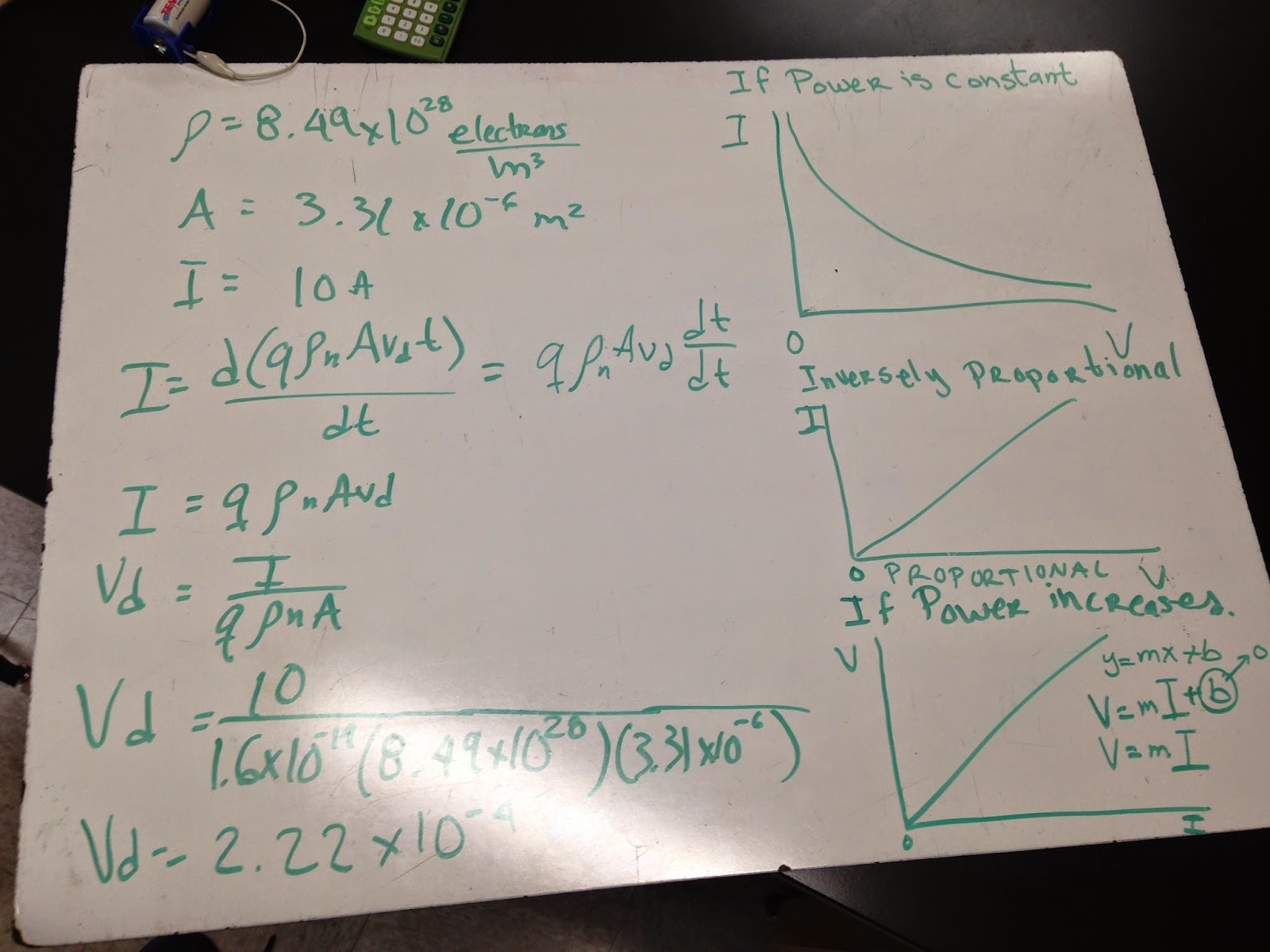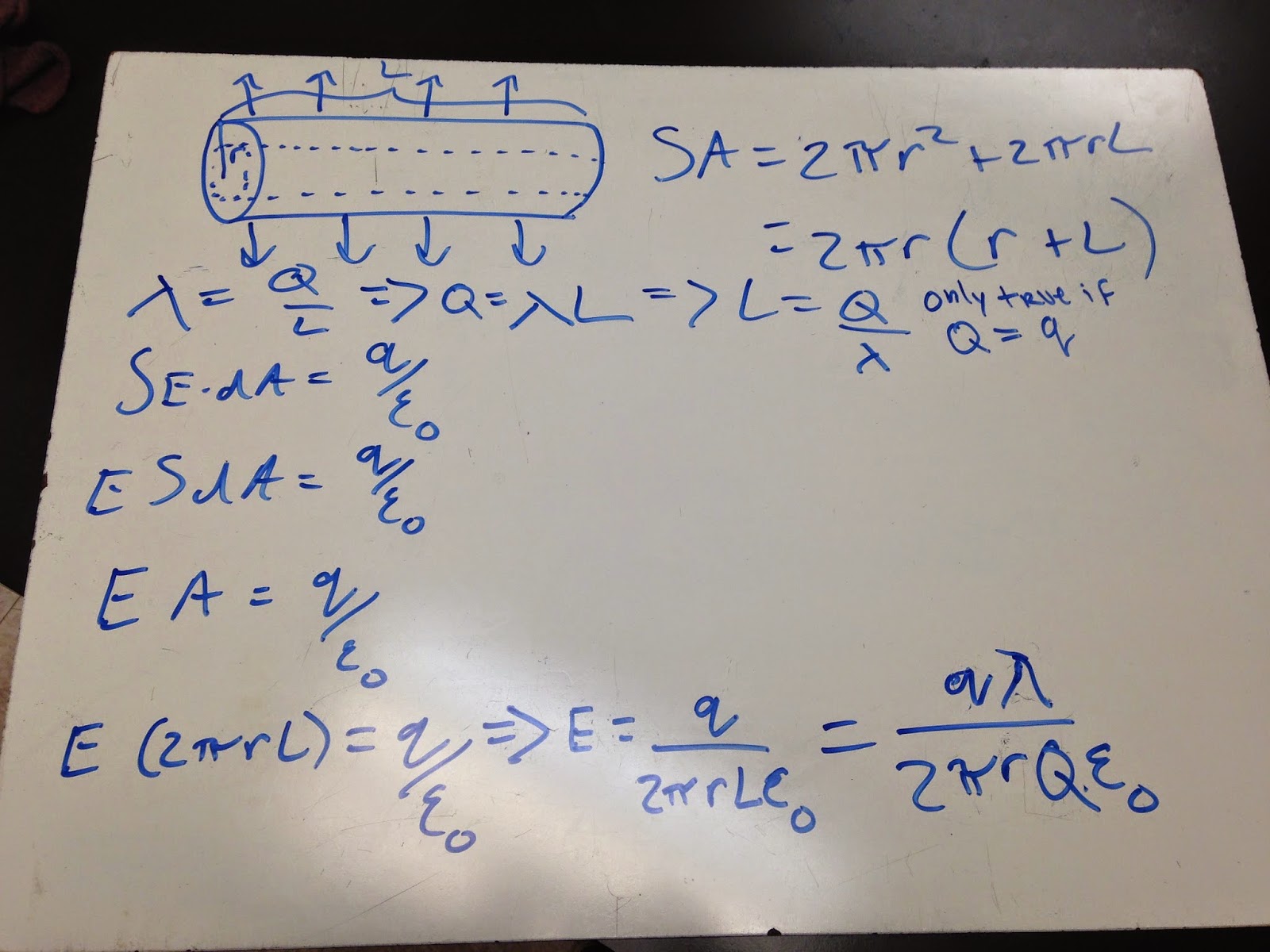.png) |
| Each label indicates the resulting electric potential at that point due to the various charges. |
Tuesday, April 21, 2015
Potential on a Ring around a set of charges
Electric Potential Energy and Work
 |
| In an experiment where we analyzed the effects that a metal conductor connected to a source would have on the temperature of a cup of water, we see that the temperature increases steadily over time. |
 |
| When the voltage is increased, the temperature rises faster. |
 |
| In the previous two pictures, we show how to calculate the potential at a point due to numerous charges. As you can see, the total potential is simply the sum the potentials due to each charge. |
Monday, April 20, 2015
Current and Resistance
 |
| Here we are trying to light a light bulb given two batteries, a conducting wire, and the light bulb. |
Gauss' Law
 |
| This Van de Graff electrostatic generator is what was used to induce the charge on the cylinder. |
 |
| Placing several metal objects inside the microwave, we see that sparks are created at the surfaces of these objects. These objects include steel wook, a fork, and a CD. |
 |
| The charge inside a conducting material is zero. All of the excess charge is location on the surface of the sphere. |
Subscribe to:
Comments (Atom)
.png)























